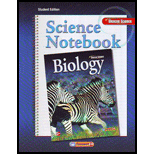
Concept explainers
To summarize:
The characteristics of amphibians.
Introduction:
Amphibians are the animals that belong to the class amphibia of the phylum Chordata. Amphibians are vertebrates that live both on land and water. They are the first cold-blooded animals to have appeared on land. Most species of amphibians live close to water or in damp places. Some are most active at night when the ground is wet with dew. Others live mostly underground, beneath wet leaves or under decaying trees.
Explanation of Solution
The characteristics of amphibians are summarized in the table below:
| Characteristics of amphibians | |
| Feeding and digestion | Adult amphibians are predators. After eating food, digestion takes place in the stomach and intestine. The undigested wastes collect in cloaca before exiting the body. |
| Excretion | Amphibians excrete through feces and urine. Their kidneys filter wastes from the blood. Aquatic amphibians excrete ammonia(ammonotelic), but land amphibians excrete urea(ureotelic) |
| Respiration | Larvae such as tadpole of a frog breathe or exchange gases through gills and skin. Adult amphibians breathe through lungs and skin. |
| Circulation | Amphibians have three-chambered heart including two atria and one ventricle. Amphibianshave two circulatoryroutes, one for oxygenation of the blood through the lungs and skin, and the other to take oxygen to the rest of the body (double-loop circulation). |
| Brain and senses | The forebrain of amphibians detects odors. The nictitating membrane protects the eyes. The tympanic membrane helps in hearing. They cannot regulate body temperature as they are cold-blooded. |
| Reproduction | The eggs are laid and fertilized in the water. The embryo feeds on yolk during development. The egg hatched into larvae tadpoles. Tadpoles change to adults through metamorphosis |
Additional Science Textbook Solutions
Campbell Biology (10th Edition)
Biology: Life on Earth with Physiology (11th Edition)
Human Biology: Concepts and Current Issues (8th Edition)
Campbell Biology (11th Edition)
Campbell Essential Biology (6th Edition) - standalone book
 Human Anatomy & Physiology (11th Edition)BiologyISBN:9780134580999Author:Elaine N. Marieb, Katja N. HoehnPublisher:PEARSON
Human Anatomy & Physiology (11th Edition)BiologyISBN:9780134580999Author:Elaine N. Marieb, Katja N. HoehnPublisher:PEARSON Biology 2eBiologyISBN:9781947172517Author:Matthew Douglas, Jung Choi, Mary Ann ClarkPublisher:OpenStax
Biology 2eBiologyISBN:9781947172517Author:Matthew Douglas, Jung Choi, Mary Ann ClarkPublisher:OpenStax Anatomy & PhysiologyBiologyISBN:9781259398629Author:McKinley, Michael P., O'loughlin, Valerie Dean, Bidle, Theresa StouterPublisher:Mcgraw Hill Education,
Anatomy & PhysiologyBiologyISBN:9781259398629Author:McKinley, Michael P., O'loughlin, Valerie Dean, Bidle, Theresa StouterPublisher:Mcgraw Hill Education, Molecular Biology of the Cell (Sixth Edition)BiologyISBN:9780815344322Author:Bruce Alberts, Alexander D. Johnson, Julian Lewis, David Morgan, Martin Raff, Keith Roberts, Peter WalterPublisher:W. W. Norton & Company
Molecular Biology of the Cell (Sixth Edition)BiologyISBN:9780815344322Author:Bruce Alberts, Alexander D. Johnson, Julian Lewis, David Morgan, Martin Raff, Keith Roberts, Peter WalterPublisher:W. W. Norton & Company Laboratory Manual For Human Anatomy & PhysiologyBiologyISBN:9781260159363Author:Martin, Terry R., Prentice-craver, CynthiaPublisher:McGraw-Hill Publishing Co.
Laboratory Manual For Human Anatomy & PhysiologyBiologyISBN:9781260159363Author:Martin, Terry R., Prentice-craver, CynthiaPublisher:McGraw-Hill Publishing Co. Inquiry Into Life (16th Edition)BiologyISBN:9781260231700Author:Sylvia S. Mader, Michael WindelspechtPublisher:McGraw Hill Education
Inquiry Into Life (16th Edition)BiologyISBN:9781260231700Author:Sylvia S. Mader, Michael WindelspechtPublisher:McGraw Hill Education





